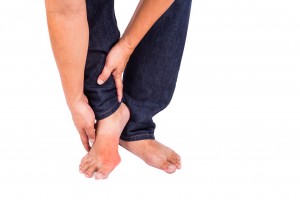

 Gout and chronic kidney disease prevalence raises interest in the link between hyperuricemia and kidney disease. The study specifically looked at the role of the kidneys in uric acid excretion, along with the possible impact of hyperuricemia on the kidney disease progression. The possible shared link appears to be the chronic, low-grade, systemic inflammation that is intrinsic to both conditions.
Gout and chronic kidney disease prevalence raises interest in the link between hyperuricemia and kidney disease. The study specifically looked at the role of the kidneys in uric acid excretion, along with the possible impact of hyperuricemia on the kidney disease progression. The possible shared link appears to be the chronic, low-grade, systemic inflammation that is intrinsic to both conditions.
High uric acid levels – known as hyperuricemia – increase the risk of gout, kidney disease, and early death. Uric acid is the product of the purine breakdown. Purines are found in many of the foods that make part of our daily meals – like red meat and even alcohol. When purines are broken down and turned into uric acid, they travel through the bloodstream into the kidneys where they are expelled from the body through urination. When there is an excess amount of uric acid that remains in the body, it can build up in other parts – most commonly around the joints of the big toe, where gout can be found.
An excess of uric acid is due to two factors: 1) your body produces too much of it on its own through the digestive process, or 2) your kidneys are unable to filter uric acid out of the body. Both scenarios lead to hyperuricemia.
High uric acid levels are commonly associated with the arthritic condition known as gout. Consuming a diet rich in purine foods can increase uric acid levels, which can ultimately lead to gout.
Gout is a form of arthritis, which can cause severe pain and swelling, commonly around the big toe. As uric acid forms around the joint in the big toe, it can cause redness, warmth, and, of course, pain.
One study followed 47,150 men without gout for 12 years. The men were given questionnaires to find out whether they fit the criteria for gout. Their diet was assessed every four years using a food-frequency questionnaire.
By the end of the study, 730 men developed gout. Consumption of meat and seafood were found to be the highest risk factors. Those who consumed dairy had the lowest risk.
Aside from causing joint pain, excessive amounts of uric acid can contribute to kidney stones. Kidney stones are described as being one of the most painful experiences a person can encounter – some even report it’s more painful than childbirth! Although kidney stones can often be passed or removed, in some cases they can damage the kidneys by causing an obstruction, which prevents the kidneys from filtering out waste, or by scarring the kidneys due to rough edges on the stones. All scenarios can contribute to chronic kidney disease or, even worse, kidney failure.
If the kidneys have endured damaged or kidney function has been reduced for three months or longer, chronic kidney disease can be caused. In cases of kidney failure, dialysis may be required, which can cause further complications or even death.
 Prevention of gout and kidney disease begins with lifestyle changes. To lower the risk of gout, one must consume less purines in their diet. Foods to avoid or eliminate include organ meats, liver, kidney, sweetbread, brains, bacon, beef, pork, lamb, any meat in large quantities, anchovies, sardines, herring, mackerel, scallops, gravy, and beer. Instead, consume a diet high in fruits, vegetables, and whole grains, along with low-fat dairy products. Limiting sugary foods and beverages, especially those that contain fructose, can also help lower your risk of gout.
Prevention of gout and kidney disease begins with lifestyle changes. To lower the risk of gout, one must consume less purines in their diet. Foods to avoid or eliminate include organ meats, liver, kidney, sweetbread, brains, bacon, beef, pork, lamb, any meat in large quantities, anchovies, sardines, herring, mackerel, scallops, gravy, and beer. Instead, consume a diet high in fruits, vegetables, and whole grains, along with low-fat dairy products. Limiting sugary foods and beverages, especially those that contain fructose, can also help lower your risk of gout.
You will also want to maintain proper hydration as a means to reduce the risk of kidney stone formation, which can cause damage to the kidneys.
Maintaining a healthy weight and blood pressure levels, along with exercising regularly can help further reduce your risk as well.
Related Reading:
What is gout? Causes, symptoms, diagnosis, and treatment
Gout is a particular type of arthritis that targets the joints and tissues around the large toe and foot. Attacks of gout can happen sporadically, but they usually occur soon after waking up or during the night. To have a better understanding of this form of arthritis, let’s look at causes, symptoms, risk factors and how to treat gout naturally. Continue reading…
Gout with tophi (uric acid deposits) can increase heart disease risk
When someone has a gout, a painful form of arthritis, along with what is referred to as tophi, or uric acid crystal deposits, researchers say they could be at risk of getting heart disease, too. Gout has been described as a complicated type of arthritis, which affects men more often than women. It is characterized by severe pain, redness and tenderness in joints, particularly the big toe. One of the complications of gout is tophi, which are small lumps of uric acid crystals that form under the skin. Continue reading…
Copyright © www.orthopaedics.win Bone Health All Rights Reserved